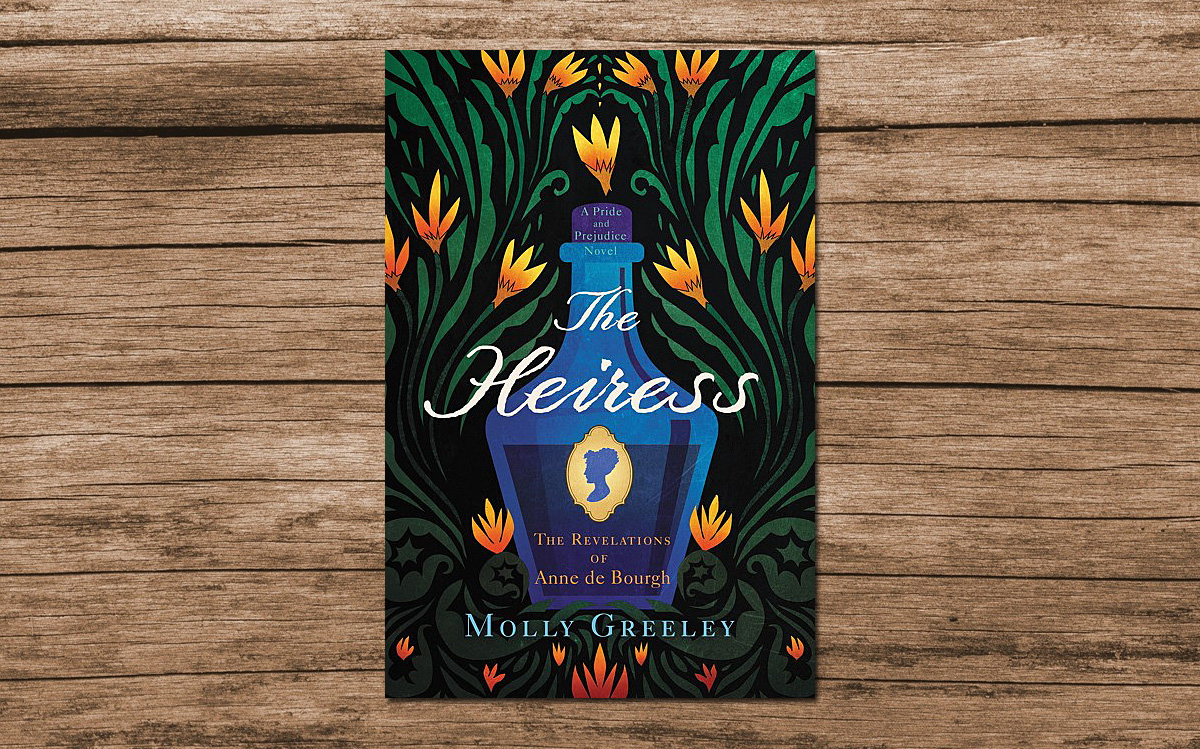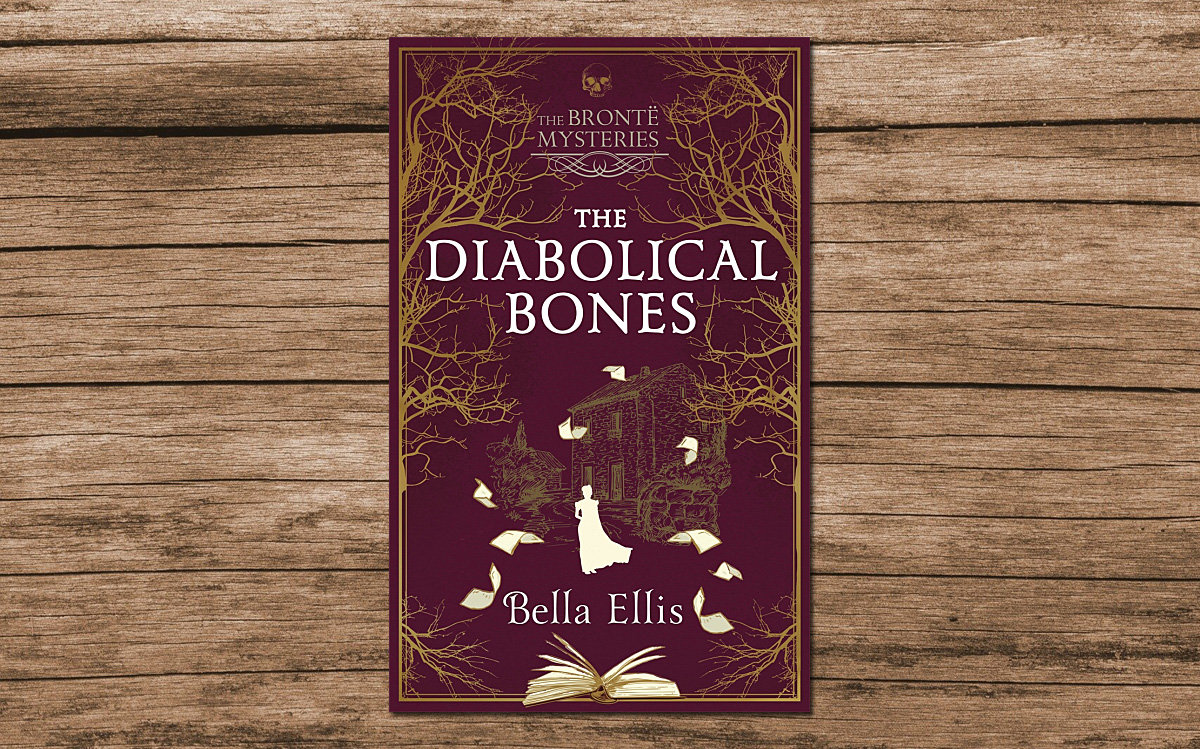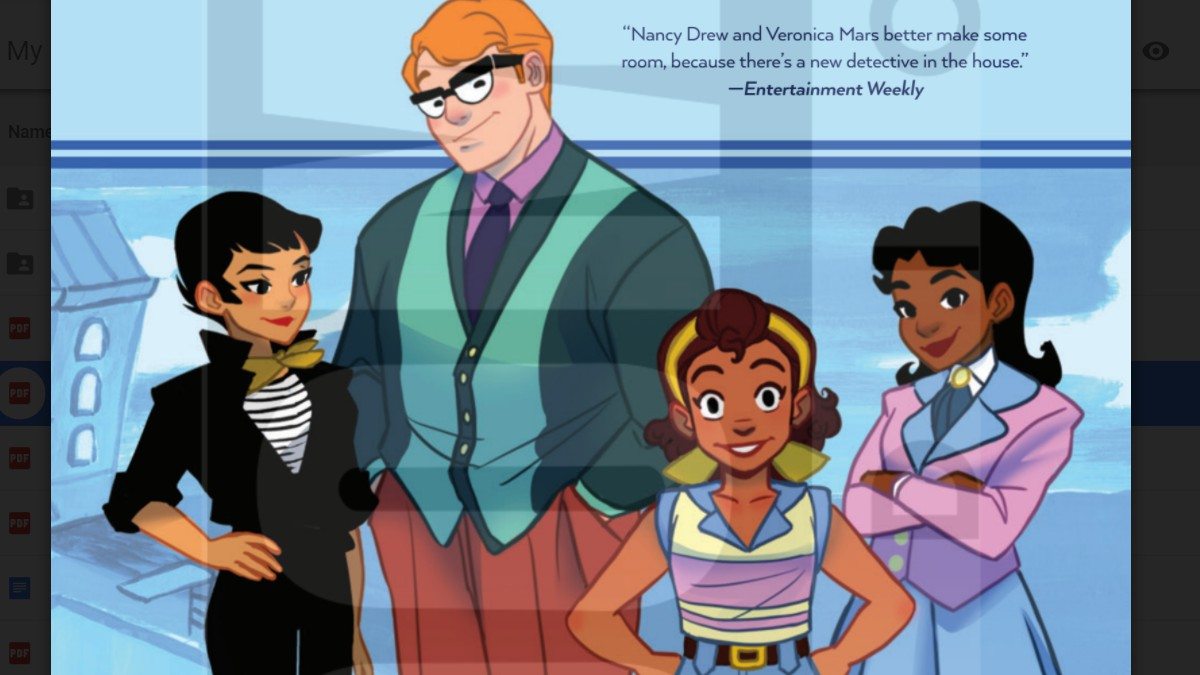Classics are often classics for a reason, filled with memorable characters and beautiful writing that has been proven to stand the test of time. They are all, however, products of their time, meaning that LGBTQ characters and strong, vocal women are effectively invisible within their pages.
I have spent the first few weeks of 2021 reading three books that take classic novels and authors and give them a 21st-century twist in three very different ways. A minor character from Pride and Prejudice evolves her own surprisingly believable LGBTQ story, the Bronte sisters prove their worth to those living close to them, and The Great Gatsby gets a YA dystopian future makeover.
I thoroughly enjoyed all three of these and I hope you do too.
Please note: This post contains affiliate links.

The Heiress: The Revelations of Anne de Bourgh by Molly Greeley
The first book I read for this roundup was The Heiress: The Revelations of Anne de Bourgh by Molly Greeley, a Pride and Prejudice spin-off that focuses on one of the book’s minor characters. In Pride and Prejudice, Anne de Bourgh rarely speaks and is referred to as having a “sickly constitution” and being “pale and sickly” in Elizabeth Bennett’s eyes. In The Heiress, the reasons behind this are explored in a novel the follows Anne’s life from cradle to grave with an LGBTQ twist.
The book is split into three parts, the first being set throughout Anne’s childhood through her twenties, all spent at her home – Rosings Park. As a baby, Anne is fussy and the family doctor prescribes laudanum drops (a potent combination of alcohol and opium) to soothe her. Very quickly, Anne develops what through modern eyes we recognize as an addiction to the substance, however, her family only see that her “illness” returns anytime she stops taking her drops resulting in their belief that she is inherently sickly and needs the drops twice daily, despite the obvious soporific effect they have on her. It is this heavily drugged Anne that Darcy and other characters come to know, leading them to believe her to be at best uninteresting and referring to her as “a doll”.

It is only as an adult that Anne begins to realize that perhaps her medication is doing more harm than good when one of the few people she is close to explains the concept of addiction to her from personal experience. At first, she refuses to believe it, but after a terrifying hallucination brought on by the laudanum, Anne makes a wild decision on instinct and escapes Rosings Park for London, knowing full well that her overbearing mother would never allow her to stop taking her drops and work through the withdrawals.
In London, Anne begins to recover from a lifetime of merely existing and begins to live a full life for the first time. She is astonished, as are many who knew her before, by her own capabilities now her mind and body are not permanently addled by the drug – finding herself enjoying novels, brisk walks, and the other diversions of London. One of her greatest pleasures is Eliza, a young woman who introduces her to the works of Mary Wollstonecraft. Soon, the pair forge an intimate lesbian relationship which they know they must hide from the world in order to retain their reputations but Anne also comes to realize that as the heiress to Rosings and one of the great estates of England, she must act to secure its future in a way that will make her happy.

This is a fantastic addendum to the Pride and Prejudice legacy that will make you see this very minor character in a whole new light. Anne is initially a character who engenders your sympathy as she is endlessly sidelined through no fault of her own, but as she awakens to her own abilities and becomes a powerful, opinionated woman of her own making, you cannot help but root for her. Her relationship with Eliza is often hard to read about because of the constraints the two women face due to the limited options available to women at the time, and the economic danger they would find themselves and their families in should their true feelings be revealed. I was also surprised at how detailed the sex scenes between them were, not because they were especially graphic compared with other romances, but because the entire first part of the book was written in a more traditional regency style, which made the sudden inclusion of a lesbian sex scene rather surprising!
Although I found the final chapter a little out of place, this was a fantastic and impressively feminist book. It made me want to pick up Pride and Prejudice again, and also to read the author’s other spin-off The Clergyman’s Wife which focuses on Charlotte Collins.

The Diabolical Bones by Bella Ellis
Roughly a year ago, I read The Vanished Bride by Bella Ellis, a pen name of Rowan Coleman and I knew I would definitely want to continue reading The Bronte Mysteries series. This month I finally got around to picking up book two – The Diabolical Bones – which is set several months later over Christmas 1845.
This series follows the three Bronte sisters – Anne, Charlotte, and Emily – and their brother Branwell as they investigate mysteries in and around their home village of Haworth in Yorkshire. In book two, the bones of a child are discovered bricked up inside the chimney of a bedchamber that has not been opened in the thirteen years since its mistress passed away. Clifton Bradshaw, the master of the remote farmhouse where the bones were found, is the immediate and most likely suspect being a drunkard believed by many superstitious locals to have dealings with the devil, but the sisters cannot find enough evidence to be without their doubts. As their investigations continue, more and more bizarre evidence begins to mount up: a Catholic locket, strange and demonic symbols carved into stones, and a lady in black hovering near the graveyard. Soon, it becomes clear that whoever is responsible for hiding the bones intends to strike again, can the sisters solve the case before it’s too late?

This was a great sequel that captured the same spirit as the first book but didn’t feel as if we were retreading the same ground. The mystery here is very different from that of the first book and the sisters have grown in confidence as well as having a more extended circle of confidants to assist them in their endeavors. I did find that I figured out “whodunnit” early in the book, probably no more than 25% of the way through, but this honestly didn’t hurt the story and I still didn’t figure out some of the other elements until closer to the end.
As with the first book, you can see elements of the Bronte sisters’ famous novels throughout, this is because these books are written as accounts of the events that inspired the sisters to write their own books. The Vanished Bride had strong connections to Jane Eyre, but The Diablocal Bones is clearly set up as the story which inspired Wuthering Heights, as the isolated house of Top Withens, frequent descriptions of desolate moors, and even a few of the character names themselves will testify.

This was a great book that really captured the isolation of Haworth when it is gripped in a snowy winter and feels so remote and cut off from the rest of the world, making the concept of a murderer stalking the area that much more terrifying. I loved the vivid descriptions of the sisters’ walks to visit their neighbors and their occasional trips to the nearby big cities of Halifax and Keighley; these are especially meaningful to me as my own family was living in Keighley and even Haworth itself at the same time the Brontes were alive and I love to think they may have met!
The third book in this series is already underway (the case that inspired The Tenant of Wildfell Hall perhaps?) and I know that I will be picking it up as soon as possible. The Bronte Mysteries has become one of my favorite ongoing book series and I hope to read plenty more from it in the future.

Tell Me My Name by Amy Reed
My third and final book is Tell Me My Name by Amy Reed, a queer, YA retelling of The Great Gatsby with more than a few twists on the original.
Tell Me My Name transplants the action from New York to the fictional Commodore Island in Puget Sound, just off the coast of Seattle. Set in a dystopian future, much of the East and South of the United States is now uninhabitable due to climate change which has raised the temperatures to unbearable levels, and even Seattle itself bakes during sweltering summers with out-of-control wildfires edging ever closer. But the obscenely rich families of A-Corp who live surrounded by private security on Commodore Island have enough money not to see any of this.
This is where 18-year-old Fern lives with her Daddy and Papa, enjoying her final summer before college and waiting for her childhood friend Ash to stop dating awful rich girl Tami and remember she exists. As the only relatively normal family left in the neighborhood, Fern doesn’t feel as if she truly belongs on Commodore until Ivy Avila arrives. Ivy is a young, burnt-out child star recovering from exhaustion and she immediately befriends Fern, claiming to want a friend who is more down-to-Earth. Soon, however, Fern has been swept up into Ivy’s inescapable orbit, diving headfirst into afternoons filled with nothing but alcohol, casual sex, and designer drugs. As the wildfires press in on their idyllic enclave and increasingly desperate protests flare up in Seattle along the concrete walls that separates rich from poor, Fern knows that the path she is on is one destined to end in destruction. But with Ivy’s pull so strong, will she be able to escape and save herself and her new friend from disaster?

Tell Me My Name absolutely took my breath away. Its vision of a dystopian United States in the not-so-distant future is terrifying in how entirely believable it is with the rich simply paying their way out of every disaster and not caring about what and who they leave behind in their wake. This is, of course, true today, but here we see the same behavior magnified through the lens of even greater global suffering than we have ever imagined.
Because this is a retelling, the Great Gatsby parallels are obvious and expected with Fern taking on the role of Nick, Ivy as Gatsby, and so on. However, this does not make the book predictable. It’s fun watching how the story evolves, using the basic skeleton of the original and building on it to become something entirely different that fits perfectly into the era in which it is set. While I knew roughly what to expect and certain events came and went as I thought they would, others took unusual turns. By the end, I was left reeling from a totally unexpected conclusion that took this from an ordinary retelling of a classic into something much more and made me immediately want to pick it up and start again from the beginning.

The writing style did come across as a little disjointed, and this took me a while to get used to; however, the style choices make more and more sense as you progress through the story. This is a fast read too. I read the whole book in just a few hours, unable to put it down as the pace built up faster and faster as if I too were being pulled along with Ivy’s wild and increasingly out of control ride. This is the type of book that despite knowing that nothing good is coming, you still want to get there faster, like seeing flashing lights ahead on the road and not being able to look away from the scene of an accident.
In case it’s not obvious, I absolutely loved this book and hope to read much more by Amy Reed in the future. Tell Me My Name is due to be released on March 9th 2021 and can be pre-ordered now.
Three More Books to Consider
With so many retellings of classics currently making waves, I wanted to add in three more titles I haven’t yet had a chance to read but that are growing in popularity.
- The Court of Miracles by Kester Grant – A retelling of Les Misérables in which “a young thief finds herself going head to head with leaders of Paris’s criminal underground in the wake of a failed French Revolution”.
- These Violent Delights by Chloe Gong – This is “an imaginative Romeo and Juliet retelling set in 1920s Shanghai, with rival gangs and a monster in the depths of the Huangpu River”.
- The Wife Upstairs by Rachel Hawkins – A “compulsive, irresistible retelling of Jane Eyre with a modern, noir twist”.
GeekMom received copies of these books for review purposes.




